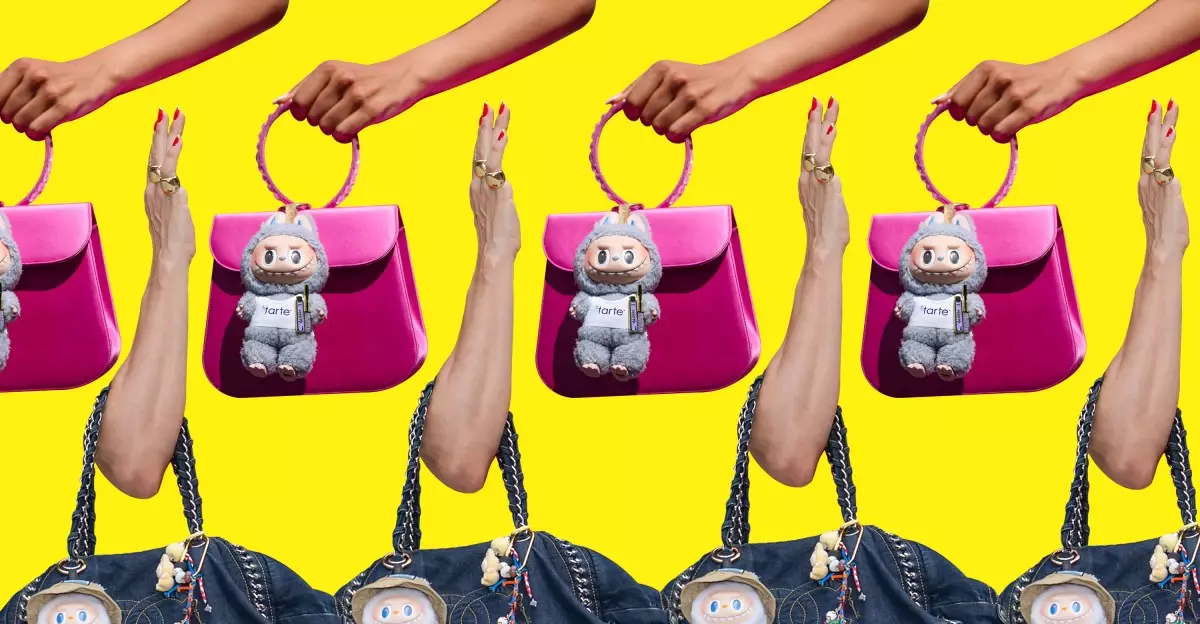In an era driven by instantaneous gratification and easily accessible content, the phenomenon of obsessive consumers chasing elusive collectibles reveals a deeper psychological cadence. The Labubu craze, as illustrated through the frantic online battles and the painstaking process of purchase, underscores humanity’s enduring fascination with scarcity and the thrill of the hunt. These toys are more than mere figurines; they embody the complex interplay between desire, effort, and validation. The arduous journey to secure a prized Labubu reflects a broader societal tendency to elevate the value of items through the suffering of acquiring them, transforming a simple purchase into a symbolic triumph over chaos.
The digital landscape amplifies this dynamic exponentially. The seemingly endless streams of live auctions, the gamified shopping interfaces, and the constant torrent of tips create an environment that mimics gambling more than traditional shopping. Consumers are drawn not just by the item itself, but by the adrenaline rush tied to the unpredictable and highly competitive quest. The TikTok influencers and forum discussions commodify this experience, turning the act of buying into a shared performance, elevating the stakes and intensifying the collective obsession.
The Illusion of Control and the Power of Dopamine
This relentless pursuit highlights a fundamental human paradox: the desire for control in a situation infused with randomness. Pop Mart’s intentional design of complex purchasing procedures—grids grayed out with disappearing stock, timers ticking down, and app glitches—serves to heighten anticipation and boost dopamine levels. The more arduous and demanding the process, the more the eventual reward feels earned and meaningful. It’s a strategic manipulation, akin to a slot machine’s design, where hope is perpetually deferred but tantalizingly within reach.
For collectors and casual fans alike, these rituals transform a trivial toy into a symbol of perseverance. Achieving the goal of buying the rare Labubu accomplishes something within the psyche: it satiates a craving for mastery, for the thrill of victory, in a landscape overly saturated with readily available products. The entire process becomes a ritualistic spectacle—each tap, each scroll, each fleeting moment of success is emotionally amplified, leading to a visceral attachment far beyond the toy itself.
The Dark Side of Collectibility: Play and Addiction
While the collectability of Labubu can be dismissed superficially as harmless fun, the underlying mechanics reveal darker truths. The analogy to gambling is striking and undeniable. These collectibles operate as a form of micro-gambling, where the gamble is whether you will secure the rare figure, and the stakes are your time, patience, and sometimes your mental health.
The addictive allure of unboxing and rare finds often overshadows the simple joy of owning a toy. For many, the real reward is not the item but the process—the shared stories, the competitive edge, the hope of scoring a coveted character like “Hope,” and the social validation gained by participating in the community. Nevertheless, this addiction can become all-consuming, fostering a cycle of disappointment and renewed hope that resembles problem gambling. The physical act of purchasing becomes a symbolic act of perseverance in a world where genuine control is illusory.
Beyond the Toy: Insights into Consumer Culture and Value Creation
Collectibles like Labubu embody a broader commentary on contemporary consumerism. Their exponential rise indicates that modern consumers often value the journey—characterized by effort, risk, and social engagement—more than the product itself. The supply chain and buying restrictions serve as catalysts for creating perceived rarity, thus elevating the item’s worth. Ironically, the proliferation of counterfeit options diminishes the market value of genuine collectibles, fostering a competitive environment defined by authenticity and effort.
This phenomenon also highlights a shift from material ownership to experiential and symbolic value. For many, owning a Labubu or participating in its acquisition process is about crafting a personal narrative—a story of perseverance, luck, and community. It challenges traditional notions of value, demonstrating that what makes an object meaningful often resides in the chaotic and unpredictable journey, not just the item’s intrinsic qualities.
The Future of Collectibles and the Rise of Consumer Rituals
As social media continues to fuel the frenzy, it’s likely that these patterns will persist or intensify. The viral nature of unboxing videos and live streams further entrenches the collective obsession, transforming buying into entertainment and social currency. The community’s shared rituals—camping out on TikTok streams, employing hacks, and obsessively refreshing purchase pages—become part of a broader cultural landscape.
Eventually, the market’s volatility may temper the hype, but the fundamental human desire for connection, challenge, and victory will endure. The challenge for the industry—and for consumers—is whether such intense rituals will become more streamlined and accessible or whether they will continue to be entangled in this gritty, almost ritualistic pursuit of rarity. Until then, the Labubu saga offers a fascinating mirror into the evolving nature of desire, value, and human resilience in a digital age.

